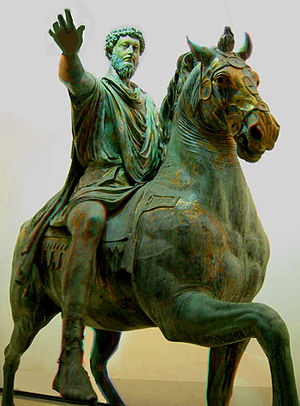Portal:Ancient Rome/Selected picture
Selected pictures

The


A she-wolf on a Roman coin from circa 77 BCE. The Roman Republic and Empire's currency was used from the middle of the third century BC until the middle of the third century AD.

The

Trajan's Column (Italian: Colonna Traiana) is a monument in Rome which commemorates the Roman emperor Trajan's victory in the Dacian Wars in 101-106 AD.
Photo credit: Unknown

